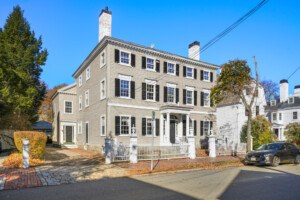Walsh Administration Gives Encouraging Signs on New Housing
Encouraging signs out of City Hall this past week seem to suggest a change in strategy for addressing the lack of housing deemed affordable to the majority of the city’s residents.
“Construction of high-end units have been outpacing those for moderate income, and we have to try to do a better job of balancing that,” Mayor Marty Walsh told the Globe, and suggested that his administration would focus on it by selling off city-owned land and, in a eye-opening statement, hinted that the city might offer developers zoning variances and tax relief if they built cheaper housing.
Even more intriguing are the comments from Sheila Dillon, the Director of the Department of Neighborhood Services (DND), also to the Globe:
“It’s not going to be a good use of anyone’s time” to try to build lower-priced housing downtown. “We have to work in the neighborhoods where there’s opportunity for growth, places where there is great public transit and available building sites.”
That would be an amazing change in strategy. During the boom years of the ’00s, the city seemed to focus almost exclusively on promoting growth in the downtown Boston Proper neighborhoods. Boylston Street in the Fenway is a prime example of the results. There were very few major condominium or apartment projects built in any of the outer neighborhoods; not even in Dorchester or Allston-Brighton. Then the economy took a turn for the worse, putting an end to any more ambitious plans of developers, and only now are we seeing this level of construction going on in East Boston and South Boston—but those projects are focused on the high-end, not the middle class.
Raising the specter of large housing developments in neighborhoods now made up of three-deckers will not be an easy task. South Boston residents, for example, are already up in arms over the number of apartment projects going up in the area, and there has been push-back in East Boston, too. Whether or not dangling an “affordability” carrot in front of residents will make the city’s plans any more appealing is the billion-dollar question.
It’s becoming clear that Mayor Walsh is taking steps to move control of the city’s planning from the Boston Redevelopment Authority to DND. And, based on what Boston contributing editor David Bernstein says, it’s past due, with the BRA known as “dysfunctional”—at best.
And, the city needs the additional housing; the U.S. Census Bureau’s numbers show Boston growing faster than major U.S. cities such as New York and San Francisco and, according to Paul McMorrow, more in the past three years than in the entire 2000-2010 decade.
All of this comes as the newest Standard & Poor / Case-Shiller condominium real estate index report, which shows Metro Boston condo prices have almost reached parity with the values seen at the height of the market back in October 2005. The difference between then and now? Then, the market was pumped up by easy credit, and sketchy financial dealings. Now, it’s pure supply and demand that’s leading to increasing prices—more people looking than there are places to buy.
In a perfect world, Boston would see the “110,000 units over the next 10 years” that Walsh says are necessary to satiate demand. In a less than perfect world, which may be the world we all live in, we may have to settle for the same increase in supply we saw in the ’00s—about 20,000 new units of housing.
As we’re seeing today, that didn’t do anything much at all to solve our housing crisis. It’s an encouraging start.


